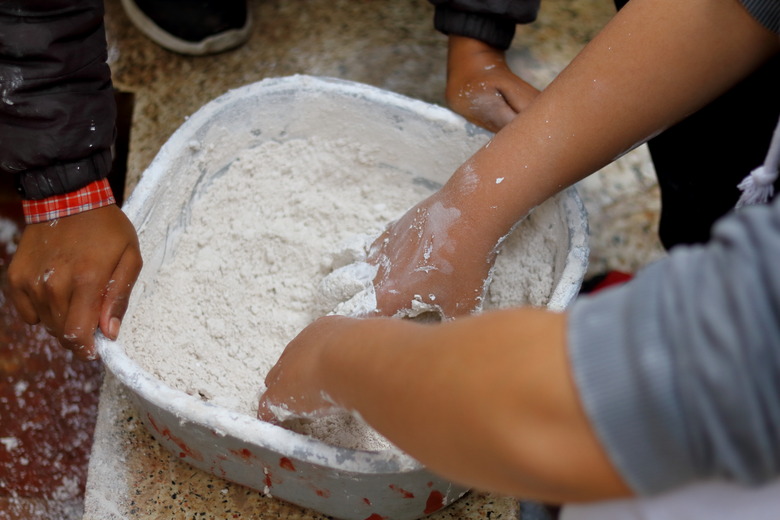Can You Use Plaster Of Paris To Get Rid Of Mice?
We may receive a commission on purchases made from links.
Mice and rats can be a real pain, no doubt about it. They hide behind walls, in the basement, and even in dark corners of closets and drawers, and when you go to bed, that's when they get busy. They pilfer food from the pantry and cupboards and leave behind prodigious amounts of pathogen-laden poop as a calling card.
If you aren't the type who finds them cute, you probably want to dispatch them as efficiently as possible, and poisoning is one way to do that. You don't want to use just any poison, though, or you could put your pets and small children at risk. Plaster of Paris is deadly to mice that ingest it, and it's less toxic than conventional rat poison, so it sounds like a good candidate. But does it work, and is it really harmless?
Forget About Rat (and Mouse) Balls
Forget About Rat (and Mouse) Balls
Rat balls is the name given to a popular recipe for deploying plaster of Paris in an enticing way that encourages mice to take the bait, but this recipe has a major flaw. The idea is to mix plaster of Paris in equal proportion with corn meal, flour, or some other granular food item; moisten the mixture to a doughy consistency; and form it into balls. You can then spread the balls around the house with the hope that mice will eat them and become terminally constipated.
The flaw with this recipe is the addition of water. As soon as plaster of Paris contacts water, it begins to harden, and you don't want that to happen until the mice eat the bait. Mice are picky eaters and probably won't consume much of the hardened mixture, and even if they do, the small amount of plaster they manage to ingest will probably pass harmlessly through their system.
Choose Your Plaster of Paris Mouse Poison Recipe
Choose Your Plaster of Paris Mouse Poison Recipe
The active ingredient in plaster of Paris is calcium carbonate, which is an odorless and tasteless powder. No mouse will eat it by itself, but if you mix it with something they will eat, they won't notice it's there and are more likely to ingest a fatal dose. Whatever you use as the bait must be dry, though, to ensure the plaster is still active when the mouse eats it. Here are a few suggestions:
- Mincemeat: Mix 1/2 cup of dried mincemeat (not fresh) in a bowl with 1/2 cup of plaster of Paris and set the bowl out for the mice to find.
- Flour and sugar: Combine 1 part each of flour and sugar with 2 parts plaster of Paris.
- Ground nuts: Mice love nuts, and the smell attracts them. Grind up 1/2 cup of nuts into a powder and mix it with 1/2 cup of plaster of Paris.
- Powdered chocolate: Chocolate has an even stronger aroma than nuts, and mice can't resist it, especially if it contains sugar. Mix 5 tablespoons of powdered chocolate in a bowl with 8 tablespoons of plaster of Paris.
- Peanut butter: Mix equal parts cheap peanut butter and plaster of Paris. Peanut butter doesn't contain water, so it won't activate the plaster. If you use stale peanut butter, you can even form the bait into mouse balls that will actually work.
Plaster of Paris Isn't Harmless
Plaster of Paris Isn't Harmless
When a mouse eats the bait, the plaster enters its system and begins to harden, causing abdominal cramps. Mice can't vomit, so they'll probably try to alleviate the pain by drinking water, especially if you use chocolate or peanut butter as bait. This only makes matters worse for them, and they usually die within two to four hours of ingestion.
Keep in mind, however, that pets and toddlers might also attracted to the bait, and the same thing could happen to them. They could be injured or die if they eat enough. To prevent this, deploy only mouse-size portions of the bait, and put it in places pets and toddlers can't access. Another thing to consider is where the mice die and begin decomposing. That's less likely to be behind the walls if the mice have clear entry and exit paths, so don't seal the walls until the population has been reduced to the point at which you can stop baiting.
